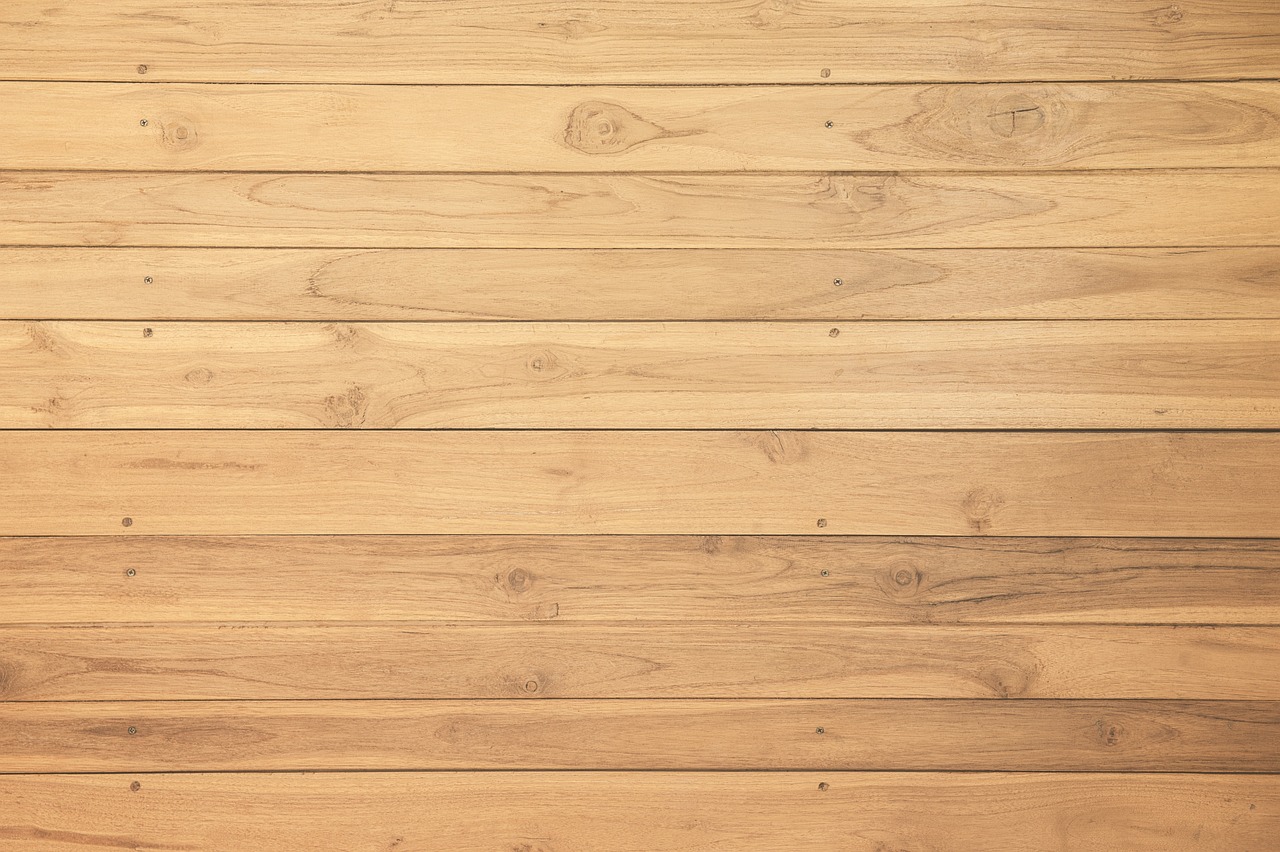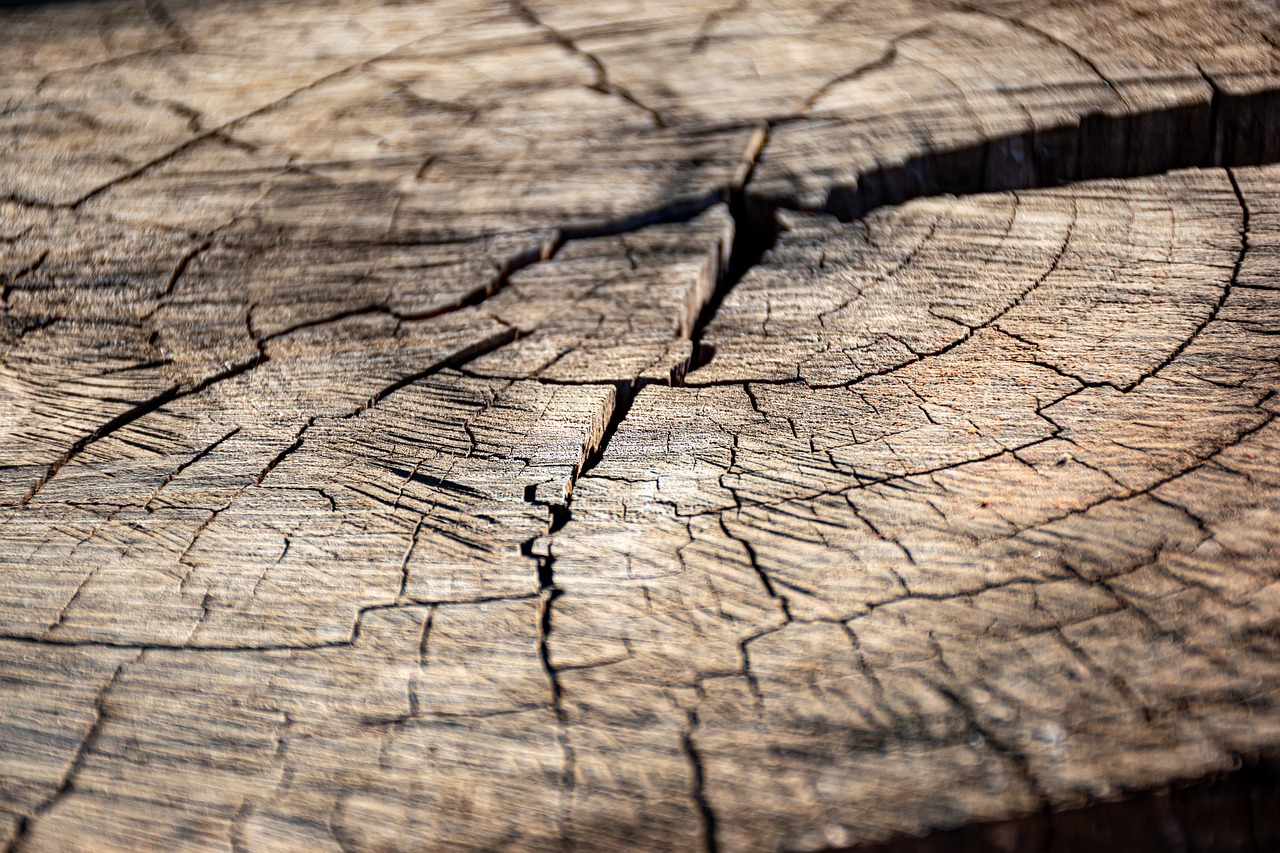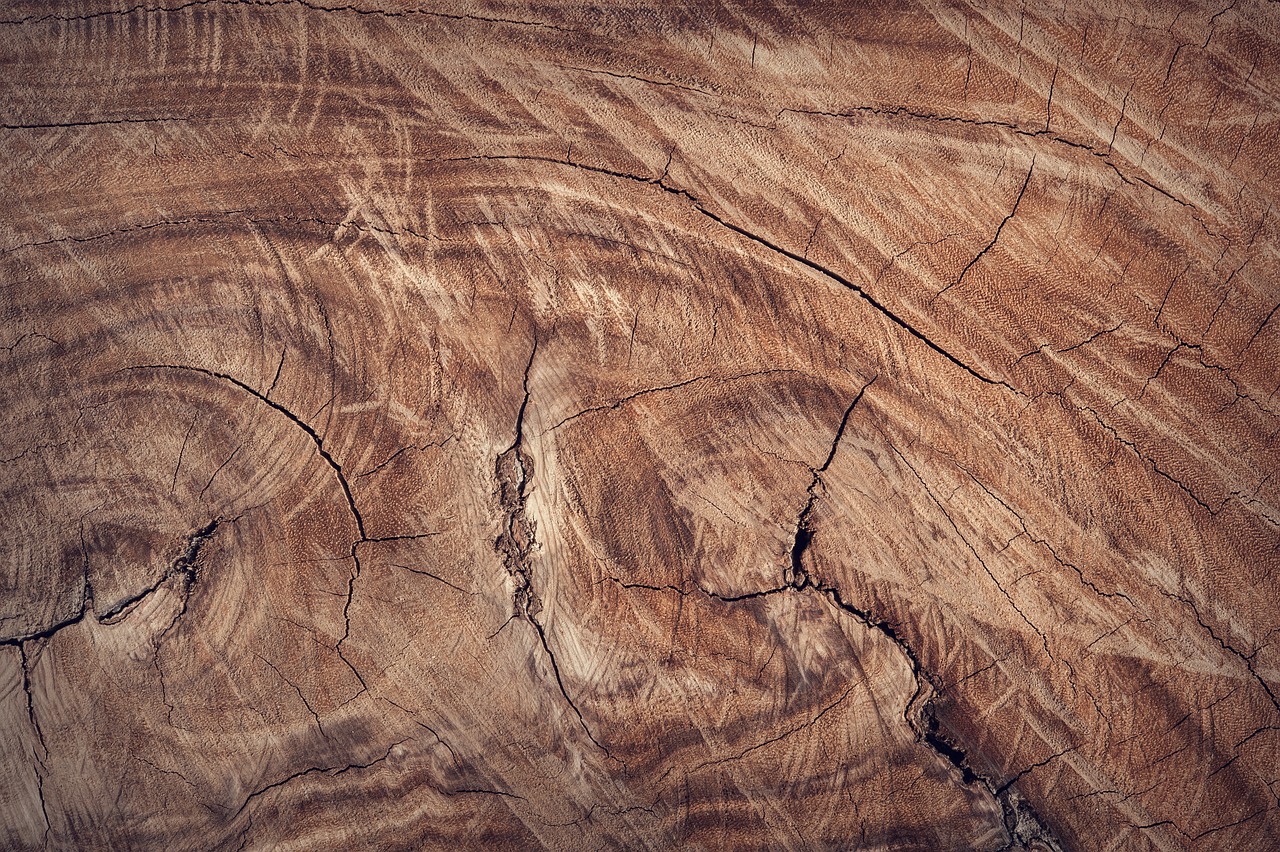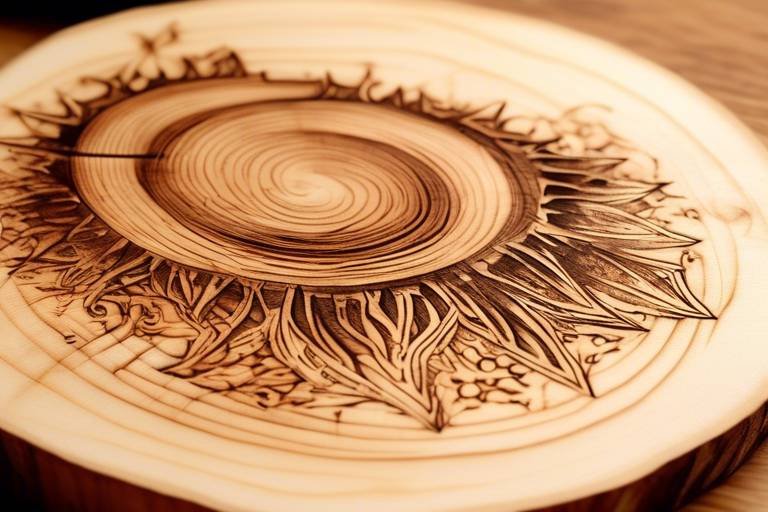Sanding Techniques for a Superior Wood Finish
Are you ready to take your woodworking projects to the next level? Achieving a flawless wood finish is not just about slapping on some paint or varnish; it’s an art that begins with the fundamental technique of sanding. In this article, we will explore various sanding techniques that are essential for creating a beautiful and smooth surface on your wooden pieces. Whether you are a seasoned woodworker or a beginner, mastering these techniques will elevate your craftsmanship and impress anyone who lays eyes on your work.
First and foremost, it’s important to understand that the quality of sanding directly influences the final appearance of your project. Imagine preparing a canvas before painting; if the surface is rough and uneven, no amount of paint will make it look good! The same principle applies to wood. The smoother the surface you create through effective sanding, the more stunning the finish will be. Throughout this article, we will delve into the intricacies of sanding, from selecting the right tools to applying the perfect finish.
So, let’s get started! We’ll begin by discussing the importance of understanding wood grain, as this knowledge is crucial for effective sanding. Then, we’ll move on to selecting the right sandpaper and the various sanding methods, both hand and power. Finally, we’ll wrap up with finishing techniques that will make your wood pieces shine. Get ready to transform your woodworking projects with these expert sanding techniques!
Recognizing the direction and characteristics of wood grain is crucial for effective sanding. Wood grain refers to the pattern that is visible on the surface of the wood, which can vary significantly depending on the type of wood and how it was cut. Understanding how to identify the grain direction will help you sand more effectively, as sanding against the grain can lead to scratches and an uneven finish.
When sanding, always follow the direction of the grain. Think of it like brushing your hair; if you brush against the grain, you’ll create tangles and mess. The same goes for wood. By sanding with the grain, you’ll achieve a smoother surface and a more polished look. Additionally, different woods have different grain patterns, so take a moment to observe your wood piece before you begin sanding.
Selecting the appropriate sandpaper is vital for achieving a smooth surface. Sandpaper comes in various types, each designed for specific uses in woodworking. Here’s a quick overview of the different types of sandpaper you might encounter:
- Aluminum Oxide: Durable and long-lasting, ideal for general sanding.
- Silicon Carbide: Best for sanding metal and plastic.
- Garnet: Great for wood, providing a smooth finish, but wears out quickly.
Choosing the right sandpaper is not just about picking the first one you see. You need to consider the type of wood you’re working with, the desired finish, and the sanding stage you are in. For instance, if you’re starting with a rough piece of wood, you’ll want to use a coarser grit to remove material quickly. As you progress, you’ll switch to finer grits to smooth out the surface.
Grit size determines the roughness of sandpaper. The lower the number, the coarser the sandpaper. For example, 60-grit is rough and removes material quickly, while 220-grit is fine and perfect for finishing touches. Here’s a quick guide:
| Grit Size | Use |
|---|---|
| 60-80 | Initial sanding of rough surfaces |
| 120-150 | Smoothing surfaces |
| 220+ | Final sanding before finishing |
Understanding the differences between coarse and fine grit sandpaper can significantly impact your project's outcome. Coarse grit is perfect for removing material quickly, while fine grit is used for smoothing and preparing the surface for finishing. It’s like using a chisel versus a fine file; both have their place in woodworking, but knowing when to use each one is key to success.
Some projects may require specialty sandpapers. For instance, sponge sanders and foam pads are designed for intricate surfaces and can reach into tight corners that traditional sandpaper can’t. These tools are invaluable when working on detailed projects, allowing you to achieve a flawless finish even in challenging areas.
Hand sanding offers precision and control. While power tools are great, nothing beats the tactile feedback of sanding by hand. When hand sanding, use a sanding block to maintain even pressure and avoid creating uneven spots. For corners and curves, consider using flexible sanding pads that can conform to the shape of your project.
Power sanders can save time and effort, especially on larger projects. Understanding the various power sanding tools available will ensure you choose the right one for your needs. Whether you’re using an orbital sander for a smooth finish or a belt sander for heavy material removal, each tool has its unique advantages.
Orbital sanders are versatile tools ideal for achieving a smooth finish. They work in a circular motion, which helps to prevent swirl marks. When using an orbital sander, keep the tool moving to avoid creating low spots. It’s a great tool for finishing surfaces and works well on both flat and curved areas.
Belt sanders are powerful machines for removing material quickly. They are perfect for leveling surfaces and can save you a lot of time. However, they can be aggressive, so it’s essential to use them carefully. To avoid common mistakes, always keep the sander moving and let the weight of the tool do the work—don’t press down too hard!
Sanding is just the beginning; finishing techniques are crucial for enhancing wood's appearance. After sanding, you can apply various finishes such as stains, oils, or varnishes to protect the wood and bring out its natural beauty. Each finish has its application method, so be sure to read the instructions and choose the right one for your project.
In conclusion, mastering sanding techniques is essential for any woodworker looking to achieve a superior finish. By understanding wood grain, choosing the right sandpaper, and employing effective sanding methods, you’ll be well on your way to creating stunning wooden pieces that will last for years to come.
Q: What is the best grit sandpaper for finishing?
A: For finishing, it's best to use fine grit sandpaper, typically 220-grit or higher, to achieve a smooth surface.
Q: Should I sand between coats of finish?
A: Yes, lightly sanding between coats helps to create a better bond and a smoother finish.
Q: Can I use power sanders for all types of projects?
A: While power sanders are great for many projects, hand sanding is often better for intricate details and delicate areas.

Understanding Wood Grain
When diving into the world of woodworking, one of the first things you'll encounter is the wood grain. This intricate pattern is more than just a beautiful aesthetic; it plays a critical role in how you approach sanding and finishing your projects. Understanding the direction and characteristics of wood grain can be the difference between a flawless finish and a rough, uneven surface. So, why is it so important? Well, the grain of the wood affects how the material responds to sanding, which ultimately impacts the final look of your work.
Wood grain can be classified into several types, including straight, curly, and wavy. Each type has its own unique characteristics that can influence your sanding technique:
- Straight Grain: This is the most common type and is generally easier to work with. Sanding along the grain will yield the best results.
- Curly Grain: This grain type can be more challenging due to its unpredictable pattern. Careful sanding is required to avoid tearing the fibers.
- Wavy Grain: Similar to curly grain, wavy grain can cause issues if not sanded correctly. Always sand with the grain to maintain a smooth finish.
Another crucial aspect of wood grain is its direction. Sanding against the grain can lead to scratches and an unsightly finish. Think of it like brushing your hair; if you brush against it, you create tangles and frizz. The same principle applies to wood. Always follow the grain direction to ensure a smooth, polished surface. Additionally, different wood species exhibit various grain patterns, which can affect how they absorb stains and finishes. For instance, oak has a prominent grain that can highlight imperfections if not sanded properly.
Moreover, the moisture content of the wood can also alter the grain's appearance. When wood is freshly cut, it may expand and contract as it dries, causing the grain to shift. Therefore, it's essential to allow your wood to acclimate to its environment before starting your sanding process. This step will help you achieve a more consistent finish.
In summary, understanding wood grain is not just a technical skill; it’s an art form that requires observation and practice. By recognizing the different types of grain and their implications for sanding, you can elevate your woodworking projects to a professional level. So, the next time you pick up a piece of wood, take a moment to admire its grain and consider how it will guide your sanding process.

Choosing the Right Sandpaper
When it comes to woodworking, selecting the right sandpaper is akin to choosing the perfect paintbrush for an artist. Just like you wouldn’t use a broad brush for fine details, using the wrong type of sandpaper can lead to frustration and a less-than-stellar finish. The world of sandpaper is vast, with different types and grits designed for specific tasks. Understanding these options will not only save you time but also elevate the quality of your work.
First, let's dive into the types of sandpaper available. Sandpaper is generally made from a variety of materials, including aluminum oxide, silicon carbide, and garnet. Each of these materials serves a unique purpose:
- Aluminum Oxide: This is the most common type of sandpaper. It’s durable and works well on wood, metal, and plastic.
- Silicon Carbide: Ideal for sanding harder materials like fiberglass and plastic, this type is often used wet.
- Garnet: Known for its natural feel, garnet sandpaper is perfect for woodwork, providing a smooth finish but wearing out more quickly.
Now that we've covered the materials, let's talk about grit size. Grit size is a critical factor that determines how rough or smooth the sandpaper will be. The lower the number, the coarser the sandpaper. For instance, a 60-grit paper is great for removing material quickly, while a 220-grit paper is better suited for fine sanding and preparing for finishing. Here's a quick breakdown:
| Grit Size | Purpose |
|---|---|
| 60-80 | Coarse sanding, material removal |
| 100-120 | Medium sanding, smoothing rough surfaces |
| 150-220 | Fine sanding, preparing for finish |
It's essential to choose the right grit for the job at hand. For example, if you’re working on a piece of reclaimed wood with rough edges, starting with a coarse grit like 80 will help you quickly smooth out the surface. Once you've achieved the desired smoothness, you can transition to finer grits to refine the finish. Think of it as sculpting: you start with a chisel to shape the form and then use finer tools to create the details.
Another important aspect to consider is the type of sanding you’ll be doing. Are you hand sanding or using a power sander? For hand sanding, you might prefer flexible sheets or sponges that can conform to curves and contours. In contrast, power sanders typically require specific sandpaper attachments. Always check the manufacturer's recommendations to ensure compatibility.
Finally, don't forget about specialty sandpapers that can make your life easier. For instance, sponge sanders are fantastic for getting into those tricky corners, while foam pads can provide a smooth finish on intricate surfaces. These tools can be game-changers, particularly when you’re working on detailed projects where precision is key.
In conclusion, choosing the right sandpaper is not just about picking a piece of sandpaper off the shelf; it’s about understanding your project’s needs and selecting the best tool for the job. By considering the material, grit size, and type of sanding you’ll be doing, you can ensure that your woodworking projects not only look great but also stand the test of time.
Q: What is the best sandpaper for beginners?
A: For beginners, starting with aluminum oxide sandpaper in the medium grit range (100-120) is advisable. It’s versatile and works well for various projects.
Q: How often should I change my sandpaper?
A: You should change sandpaper when it becomes clogged or worn out. A good rule of thumb is to inspect it frequently during use, especially if you notice a decrease in effectiveness.
Q: Can I use the same sandpaper for different materials?
A: While you can use the same sandpaper for various materials, it's best to use sandpaper suited to each material type for optimal results. For example, use silicon carbide for plastic and aluminum oxide for wood.

Grit Sizes Explained
Understanding grit sizes is essential for any woodworking enthusiast looking to achieve that perfect finish. Grit size refers to the size of the abrasive particles on the sandpaper, and it plays a crucial role in determining how smooth your wood surface will be. It’s a bit like choosing the right tool for a job; using the wrong grit can lead to frustration and subpar results. So, how do you navigate this world of numbers and textures?
Grit sizes are typically categorized into three main ranges: coarse, medium, and fine. Coarse grits, usually ranging from 40 to 60 grit, are designed for heavy material removal. Think of it as using a chainsaw to chop down a tree; it’s aggressive and gets the job done quickly but can leave rough edges. On the other hand, fine grits, which range from 120 to 240 grit, are perfect for smoothing surfaces and preparing them for finishing. This is similar to using a fine file on a piece of jewelry, ensuring every detail is polished to perfection.
To give you a clearer picture, here’s a quick breakdown of common grit sizes and their uses:
| Grit Size | Use |
|---|---|
| 40-60 | Heavy material removal (rough shaping) |
| 80-120 | Intermediate sanding (removing scratches from coarse sanding) |
| 150-240 | Fine sanding (preparing for finishing) |
| 320+ | Extra fine sanding (final finishing touch) |
When selecting sandpaper, consider the type of wood you’re working with. Hardwoods like oak or maple may require a different approach compared to softer woods like pine. For example, a 80 grit might be ideal for initial sanding on softer woods, while a 120 grit could be more appropriate for hardwoods to avoid deep scratches.
Another important aspect to consider is the sanding technique. If you’re using a power sander, you might want to start with a coarser grit to remove any imperfections quickly, then gradually move to finer grits for a smooth finish. However, if you’re hand sanding, you may find that starting with a finer grit gives you more control, especially around intricate details.
In conclusion, understanding grit sizes is like learning the language of woodworking. It empowers you to choose the right materials for your projects, ensuring that each piece not only looks great but feels great too. Remember, the right grit can make all the difference between a project that feels rushed and one that showcases your craftsmanship.
- What grit should I start with for a new project? It depends on the wood type and the condition of the surface. For rough surfaces, start with 60 grit, then progress to finer grits.
- Can I skip grits when sanding? While you can skip grits, it's generally not recommended as it can lead to a less smooth finish. Gradually moving through grits helps achieve the best results.
- How do I know when to change my sandpaper? If you notice the sandpaper is no longer cutting effectively or is clogged with dust, it’s time for a change.

Coarse vs. Fine Grit
When it comes to sanding, understanding the difference between coarse and fine grit sandpaper is like knowing when to use a sledgehammer versus a scalpel. Each serves a distinct purpose, and using the wrong one can lead to a finish that is less than desirable. Coarse grit sandpaper, typically ranging from 40 to 80 grit, is your go-to for heavy material removal. It’s perfect for leveling surfaces, removing paint, or shaping wood. Think of it as the heavy artillery in your sanding arsenal; it gets the job done quickly but can leave behind scratches that require further refinement.
On the other hand, fine grit sandpaper, ranging from 120 to 220 grit and beyond, is designed for the finishing touches. It smooths out the rough edges left by coarse grit and prepares the surface for staining or sealing. Imagine you’re polishing a diamond; the finer the grit, the more brilliant the finish. Using fine grit too early in the sanding process can clog the paper and lead to a frustrating experience, so it's crucial to follow the right sequence.
To put it simply, you wouldn’t use a fine brush to paint a fence, right? Similarly, using coarse grit on a delicate project can lead to damage and extra work. Here’s a quick summary of when to use each type:
| Grit Type | Grit Range | Best For |
|---|---|---|
| Coarse Grit | 40-80 | Heavy material removal, shaping, leveling surfaces |
| Fine Grit | 120-220+ | Smoothing surfaces, preparing for finish |
In most woodworking projects, you’ll start with coarse grit to remove the bulk of the material, then gradually move to finer grits to achieve that silky smooth finish. This progression not only enhances the wood's appearance but also ensures that the final finish adheres properly. So, remember: start rough, finish smooth!

Specialty Sandpapers
When it comes to woodworking, not all surfaces are created equal, and sometimes standard sandpapers just won't cut it. That's where come into play. These unique options are designed to tackle specific challenges and intricacies that arise during various projects. Imagine trying to sand the curved edges of a delicate piece of furniture with a flat piece of sandpaper—frustrating, right? Specialty sandpapers are the solution to such dilemmas, allowing you to achieve that flawless finish without the hassle.
One popular type of specialty sandpaper is the sponge sander. These flexible sanding sponges conform to the shape of the surface you’re working on, making them perfect for rounded edges or intricate designs. They come in various grits and can be used for both sanding and finishing, which is a game-changer for detailed projects. Another valuable tool is the foam pad, which is excellent for sanding surfaces that require a gentle touch, such as decorative moldings or softwood. The foam pad distributes pressure evenly, reducing the risk of gouging or damaging the wood.
Here’s a quick comparison of some common types of specialty sandpapers:
| Type | Best For | Features |
|---|---|---|
| Sponge Sanders | Curved and intricate surfaces | Flexible, various grits, reusable |
| Foam Pads | Delicate wood finishes | Gentle touch, even pressure distribution |
| Sandpaper Sheets | General sanding | Standard grit sizes, versatile |
| Detail Sanders | Tight corners and edges | Precision sanding, often comes with attachments |
Additionally, specialty sandpapers can be found in various forms, including adhesive-backed sheets that stick to sanding blocks or power sanders, making them incredibly convenient. These options not only enhance your efficiency but also improve the quality of your work. The right specialty sandpaper can mean the difference between a mediocre finish and a stunning one that showcases the natural beauty of the wood.
So, the next time you're gearing up for a woodworking project, don't overlook the importance of specialty sandpapers. They might just be the secret weapon you need to elevate your craftsmanship and achieve that superior finish you've always wanted. Remember, in woodworking, it's not just about the tools you use but also about knowing when and how to use them effectively!
- What is the best specialty sandpaper for detailed work? Sponge sanders are highly recommended for detailed work due to their flexibility.
- Can I use specialty sandpapers on power sanders? Yes, many specialty sandpapers are designed to be compatible with power sanders for enhanced efficiency.
- How do I choose the right grit for my project? Start with a coarser grit for initial sanding and move to finer grits for finishing touches.

Hand Sanding Techniques
When it comes to achieving a superior wood finish, hand sanding is an art form that requires both patience and precision. Unlike power sanding, which can sometimes be a bit aggressive, hand sanding allows you to have complete control over the surface you’re working on. Imagine you’re a sculptor, carefully chiseling away at a block of marble; that’s the level of finesse you can achieve with your sandpaper in hand. So, how can you master this technique? Let’s dive into some effective methods!
First off, it’s important to understand the direction of the wood grain. Sanding against the grain can leave unsightly scratches that will be visible even after finishing. Always sand in the direction of the grain for a smoother finish. If you’re unsure of the grain direction, run your hand over the surface; it should feel smoother in one direction than the other. This simple trick can save you a lot of headaches later!
Next, consider using a sanding block. A sanding block helps distribute pressure evenly across the surface, preventing uneven spots and allowing for more consistent results. You can easily make one by wrapping sandpaper around a piece of wood or purchasing a pre-made sanding block. For intricate areas, such as corners or curves, you might want to use your fingers to sand, but be cautious—too much pressure can lead to uneven surfaces.
When tackling curves or detailed work, using a flexible sanding pad can be a game-changer. These pads conform to the shape of your project, allowing you to get into those tricky spots that a rigid sanding block simply can’t reach. It’s like having a secret weapon in your woodworking arsenal!
Additionally, you should consider the sandpaper type you’re using. For initial sanding, a coarser grit (like 80 or 120) will help remove any rough spots or imperfections. Once you’ve achieved a relatively smooth surface, switch to a finer grit (like 220 or higher) for that final touch. This two-step process will ensure that your project not only looks great but feels great to the touch as well.
Finally, don’t forget to clean the surface between sanding grits. Wood dust can clog the sandpaper and hinder your progress, so take a moment to wipe down the surface with a damp cloth or a tack cloth. This simple step can make a world of difference in the end result!
In summary, hand sanding may seem like a simple task, but it’s filled with nuances that can elevate your woodworking projects. By paying attention to the wood grain, utilizing sanding blocks and flexible pads, choosing the right sandpaper grit, and keeping your surfaces clean, you’ll be well on your way to achieving that flawless finish you desire. Remember, each stroke of your sandpaper is a step closer to perfection!
- What is the best grit for hand sanding? It depends on the stage of your project. Start with a coarse grit (80-120) for rough surfaces and finish with a fine grit (220+) for a smooth finish.
- Can I sand against the grain? It’s best to sand with the grain to avoid scratches and achieve a cleaner finish.
- How often should I change sandpaper? Change sandpaper when it becomes clogged or worn out. Regularly checking will ensure optimal results.

Power Sanding Methods
When it comes to woodworking, power sanding can be a game-changer, transforming a labor-intensive task into a quick and efficient process. Imagine having a tool that not only speeds up your work but also provides a consistent finish that’s hard to achieve with hand sanding alone. Power sanders come in various types, each designed to cater to specific needs and surfaces. This section dives into the different types of power sanders available, their unique applications, and some essential tips to help you make the most of these tools.
First up, we have the orbital sander. This tool is a favorite among woodworkers for its versatility and ease of use. Orbital sanders work by moving in a circular motion, which minimizes the risk of swirl marks on your wood surface. They are perfect for finishing work, as they provide a smooth, even finish without much effort. When using an orbital sander, it’s crucial to keep the sander moving to avoid creating uneven spots. Additionally, using the right grit sandpaper will enhance your results significantly. For example, starting with a medium grit and finishing with a fine grit can leave your wood looking pristine.
Next, let's talk about belt sanders. These powerful machines are designed for heavy material removal, making them ideal for rough shaping and large surfaces. If you have a project that requires removing a lot of material quickly, a belt sander is your go-to tool. However, with great power comes great responsibility! It’s easy to make mistakes with a belt sander, so here are a few tips to keep in mind:
- Always keep the sander moving to avoid gouging the wood.
- Use a light touch; let the tool do the work.
- Be mindful of the grain direction to prevent damage.
Another popular option is the detail sander, which is perfect for those hard-to-reach areas. These sanders have a triangular shape that allows you to get into corners and tight spots with ease. If you’ve ever struggled with sanding intricate designs or edges by hand, you’ll appreciate the precision that a detail sander offers. Just like with other sanders, choosing the right grit is essential; start with a coarser grit for heavy material removal and finish with a finer grit for a smooth touch.
It’s also worth mentioning the random orbital sander, which combines the benefits of both orbital and belt sanders. This tool operates with a dual motion, providing a smooth finish while reducing the risk of swirl marks. It’s an excellent choice for both rough and finishing work. When using a random orbital sander, be sure to adjust the speed settings according to your project needs, as different materials may require different approaches.
Lastly, let’s not forget about disc sanders. These are great for flat surfaces and can handle a variety of materials. They come in both stationary and handheld models, giving you flexibility depending on your project. Stationary disc sanders are particularly useful for creating uniform surfaces, while handheld models are perfect for portability and ease of use.
In summary, power sanding methods can significantly enhance your woodworking projects. By understanding the different types of sanders available and how to use them effectively, you can achieve a level of finish that will make your projects stand out. Just remember to choose the right tool for the job, keep your sander moving, and always finish with a finer grit for that perfect touch!
Q: What is the best type of power sander for beginners?
A: An orbital sander is often recommended for beginners due to its ease of use and versatility.
Q: How do I prevent swirl marks when sanding?
A: To avoid swirl marks, always keep your sander moving and use the right grit sandpaper. Random orbital sanders are particularly effective at minimizing swirl marks.
Q: Can I use power sanders on all types of wood?
A: While most power sanders can be used on various types of wood, it’s essential to choose the right grit and technique for the specific wood type to avoid damage.

Orbital Sanders
When it comes to woodworking, achieving a smooth finish can often feel like trying to find a needle in a haystack. That's where come into play, transforming the arduous task of sanding into a more manageable and efficient process. These versatile tools are designed to provide a swirl-free finish, making them a favorite among both hobbyists and professionals alike. But what exactly makes orbital sanders so special?
Orbital sanders operate by moving the sanding pad in a random orbital motion. This unique movement minimizes the risk of leaving behind unsightly swirl marks, which can be a common issue with other sanding methods. Whether you're working on a large surface like a tabletop or tackling intricate details, an orbital sander can help you achieve that coveted smoothness without the hassle of manual sanding.
One of the standout features of orbital sanders is their ease of use. With a lightweight design and a comfortable grip, these tools allow you to sand for extended periods without straining your hands. Plus, they often come with a dust collection system that helps keep your workspace cleaner, allowing you to focus on the task at hand rather than the mess it creates.
When choosing an orbital sander, consider the following key factors:
- Power: Look for a model with sufficient power to handle your specific projects. A higher amp rating typically means more power.
- Speed Settings: Adjustable speed settings can provide versatility, allowing you to tailor the sanding process to different materials and finishes.
- Pad Size: The size of the sanding pad will affect how quickly you can cover large areas. A larger pad is great for big surfaces, while a smaller pad is ideal for detailed work.
To get the best results from your orbital sander, follow these best practices:
- Always start with a coarser grit sandpaper, then gradually move to finer grits for a smoother finish.
- Keep the sander moving continuously to avoid creating uneven spots or gouges in the wood.
- Don't apply too much pressure; let the sander do the work for you.
In summary, orbital sanders are a game-changer in the world of woodworking. With their ability to provide a smooth, swirl-free finish and their user-friendly design, they are an essential tool for anyone looking to elevate their woodworking projects. So, whether you're refinishing an old piece of furniture or crafting something new, consider reaching for an orbital sander to make your sanding experience more enjoyable and efficient.
Q: What is the difference between an orbital sander and a random orbital sander?
A: While both types of sanders use circular motion, a random orbital sander combines this circular motion with an elliptical motion, which helps to reduce swirl marks and provides a smoother finish.
Q: Can I use an orbital sander on all types of wood?
A: Yes, orbital sanders can be used on most types of wood. However, it's essential to choose the appropriate grit sandpaper based on the wood type and the desired finish.
Q: How do I maintain my orbital sander?
A: Regularly clean the sanding pad, check for wear and tear, and ensure that the dust collection system is functioning properly to prolong the life of your sander.

Belt Sanders
Belt sanders are some of the most powerful tools in the woodworking arsenal, designed to remove material quickly and efficiently. If you've ever tackled a large project, you know that time is of the essence, and a belt sander can be a real game-changer. These machines operate using a continuous loop of sandpaper that moves over two drums, allowing for rapid sanding of flat surfaces. But with great power comes great responsibility, and using a belt sander requires a bit of finesse to avoid common pitfalls.
One of the primary advantages of belt sanders is their ability to handle rough surfaces with ease. Whether you're working on reclaimed wood or trying to smooth out a particularly gnarly piece of lumber, a belt sander can save you hours of manual labor. However, it's crucial to select the right grit sandpaper for your project. For aggressive material removal, start with a coarse grit, such as 60 or 80. Once you've achieved a smoother surface, you can transition to finer grits, like 120 or 220, to refine the finish.
When using a belt sander, it's important to maintain a steady hand and consistent pressure. Unlike other sanders, belt sanders can easily gouge the wood if you linger too long in one spot. To avoid this, try to keep the sander moving in a straight line, and make sure to lift it off the surface when changing direction. This technique not only prevents uneven sanding but also extends the life of your sandpaper.
Another tip is to be mindful of the wood grain. Always sand in the direction of the grain to achieve the best finish. Sanding against the grain can lead to scratches that might not be visible until you apply a finish, which can be frustrating. Additionally, consider using a dust collection system or wearing a mask, as the dust generated by belt sanders can be quite significant.
To help you get the most out of your belt sander, here's a quick reference table summarizing the grit sizes and their typical uses:
| Grit Size | Use |
|---|---|
| 60-80 | Heavy material removal, initial sanding |
| 120 | Intermediate sanding, smoothing out rough surfaces |
| 220 | Final sanding, preparing for finishing |
In summary, belt sanders are incredibly effective tools for any woodworking project, provided you use them correctly. They can drastically reduce your workload and help you achieve a smooth, professional finish. Just remember to follow best practices, pay attention to the grit size, and keep that sander moving smoothly across the wood. With a little practice, you'll be a belt sanding pro in no time!
- What is the best grit for a belt sander? It depends on your project. Use lower grits (60-80) for heavy material removal and higher grits (120-220) for finishing.
- Can I use a belt sander on curved surfaces? Belt sanders are primarily designed for flat surfaces. For curves, consider using a hand sander or an orbital sander.
- How do I prevent gouging when using a belt sander? Maintain a steady hand, keep the sander moving, and always sand in the direction of the wood grain.

Finishing Techniques Post-Sanding
After you've put in the hard work of sanding your wood project, it’s time to elevate it to the next level with finishing techniques that not only enhance its appearance but also protect it from wear and tear. Just like a painter adds the final brush strokes to a masterpiece, finishing your wood is crucial for achieving that professional look. So, what are the best ways to finish your wood after sanding? Let’s dive in!
First off, you need to understand the different types of finishes available. Each type has its own unique properties and applications. Here’s a quick rundown of some popular options:
| Finish Type | Description | Best For |
|---|---|---|
| Varnish | A durable finish that provides a hard, protective layer. | Furniture and outdoor projects. |
| Oil | Pensetrates the wood, enhancing its natural grain. | Wooden kitchenware and decorative items. |
| Polyurethane | Offers excellent protection against moisture and abrasion. | High-traffic areas like floors. |
| Shellac | A natural finish that dries quickly and gives a warm glow. | Fine furniture and antiques. |
Now that you’ve got a grasp on the different finishes, the next step is application. The technique you choose can make a world of difference. Here are a few methods to consider:
- Brush Application: This is the most common method. Use a high-quality brush to apply the finish evenly. Make sure to follow the wood grain to avoid streaks.
- Spray Application: For a smooth, even coat without brush marks, consider using a spray gun. This method is especially useful for larger surfaces.
- Wipe-On Finish: If you’re looking for a simple approach, wipe-on finishes can be applied with a cloth. This method allows for better control and is great for small projects or touch-ups.
One crucial tip to remember is to allow adequate drying time between coats. Rushing this process can lead to a less-than-perfect finish. Typically, you should wait at least 24 hours before applying a second coat, but always check the manufacturer’s instructions for specific recommendations.
Additionally, consider sanding between coats of finish. This technique, known as “scuff sanding,” helps to create a better bond between layers and results in a smoother final appearance. Use a fine grit sandpaper (around 220 grit) and be sure to clean off any dust before applying the next coat.
Finally, once your finishing process is complete, it's important to maintain your wood projects properly. Regular cleaning and occasional reapplication of the finish will keep your wood looking fresh and vibrant for years to come. Think of it as giving your wood a spa day every now and then!
Q: How many coats of finish should I apply?
A: It generally depends on the type of finish and the desired look. Most finishes require at least two to three coats for optimal protection and appearance.
Q: Can I use different finishes on the same project?
A: Yes, but it’s crucial to ensure compatibility between finishes. For example, oil-based finishes should not be applied over water-based finishes without proper preparation.
Q: How can I fix a mistake in my finish?
A: If you notice runs or drips in your finish, let it dry completely, then sand it smooth and reapply the finish as needed.
Frequently Asked Questions
- What is the best way to understand wood grain before sanding?
Understanding wood grain is essential for effective sanding. Always examine the direction of the grain before you start. Sanding along the grain helps prevent scratches and ensures a smoother finish. If you’re unsure, a quick test on a scrap piece can help you gauge how the wood reacts.
- How do I choose the right sandpaper for my project?
Selecting the right sandpaper depends on the wood type and the stage of sanding. For initial sanding, use a coarse grit (like 60 or 80) to remove rough spots. As you progress, switch to finer grits (like 150 or 220) for a smooth finish. Always remember, the smoother the surface you want, the higher the grit you should use!
- What are the differences between coarse and fine grit sandpaper?
Coarse grit sandpaper is designed for heavy material removal, making it perfect for rough surfaces. Fine grit, on the other hand, is used for finishing touches, smoothing out surfaces without leaving scratches. Think of it like using a shovel versus a fine brush; they both serve a purpose, but for different tasks!
- Are there specialty sandpapers I should consider?
Absolutely! Specialty sandpapers like sponge sanders and foam pads are fantastic for intricate surfaces and detailed work. They conform to shapes and curves, allowing you to sand those tricky areas effectively. If your project involves detailed work, these tools are worth having in your arsenal!
- What are some effective hand sanding techniques?
When hand sanding, always work with the grain of the wood. Use long, even strokes and apply consistent pressure. For corners and curves, try using smaller pieces of sandpaper or a sanding block to maintain control. It’s like painting; the right technique makes all the difference in the final look!
- What are the advantages of using power sanders?
Power sanders can save you a ton of time and energy! They are especially useful for larger projects where hand sanding would be exhausting. Orbital sanders are great for achieving a smooth finish, while belt sanders are perfect for quick material removal. Just be cautious; it’s easy to over-sand with power tools!
- How do I properly finish wood after sanding?
Finishing techniques are crucial after sanding to enhance the wood's appearance. You can choose from oils, varnishes, or lacquers, depending on the desired look. Always ensure the surface is dust-free before applying any finish. Think of finishing as the cherry on top of a cake; it completes the look!



















